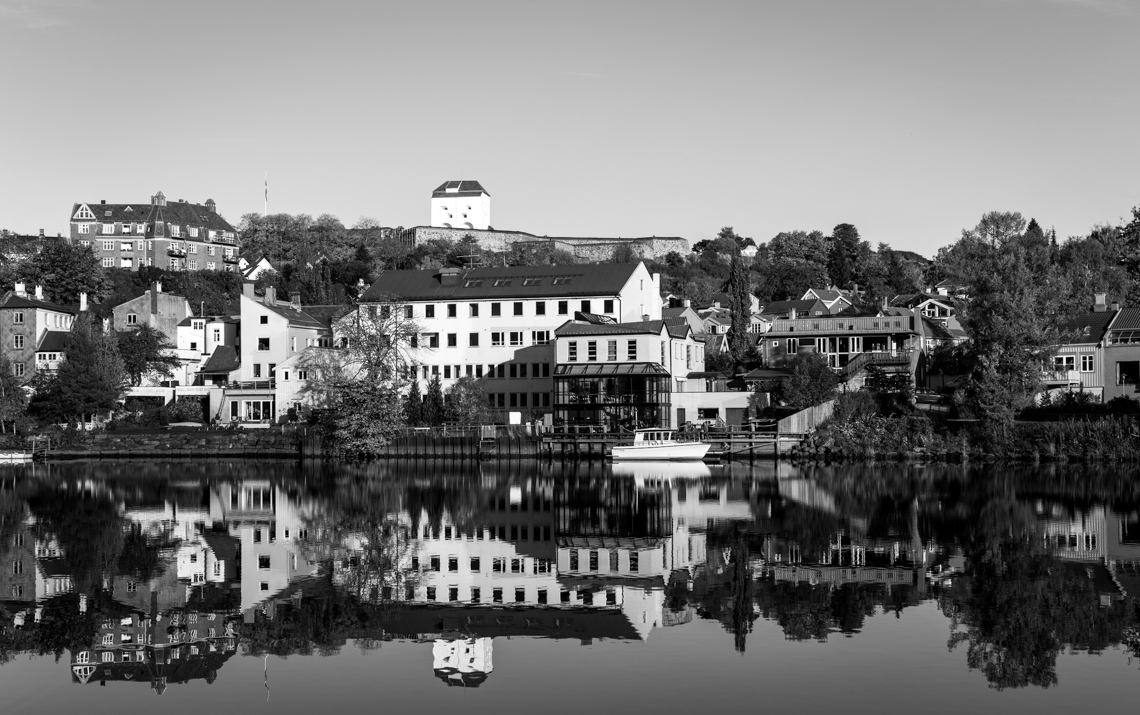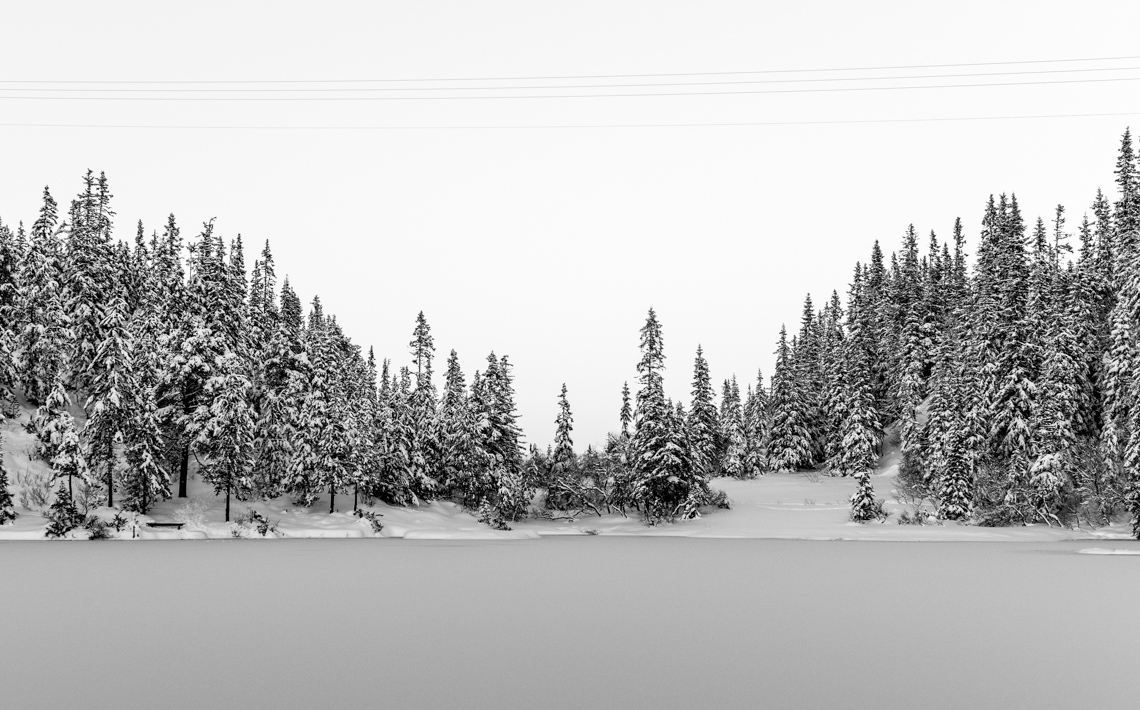The Leica Summilux 50mm f/1.4 ASPH is a lens I’ve owned twice in the last five years. I’ve considered writing about my experience of it for a couple of years now, but every time that I’ve considered starting this review I haven’t really had any clear idea about what to write about this lens. I guess the most suitable words for this lens is transparent and smooth. This review is gonna be somewhat photo-heavy, to showcase how this lens performs in most scenarios. The images was made with either Leica M Monochrom or M Typ 240, and were processed mostly in Adobe Lightroom and Photoshop, with some of the images being processed in Nik Silver Efex 2.
The one exception is at f/1.4, where this lens is all but transparent. It shows a strong signature look that I haven’t seen in any other 50mm lens. The signature is very different from the Summicron f/2 version 5, the Noctilux f/0.95 ASPH, and the Zeiss Planar 50mm f/2 ZM, which is the M-mount lenses I’ve compared it with so far. I’ve also compared the Summilux to the Sony Zeiss FE 55mm f/1.8, and also Fujifilm’s 35/1.4 and 35/2 WR lenses, which are excellent 50mm equivalent lenses.
At f/2 and up the lens is very transparent. Clinical. Correct. It has zero distortion, and it’s contrasty, colorful and punchy. At the same time the bokeh is always creamy and smooth. I sometimes feel that the bokeh is a little bit too smooth even, as it seems to lack character and definition. Some people like the smoothness and some people prefer more character. I seem to never be able to make up my mind about what I prefer. I guess the perfect look for me would be the look that the Lux 50 has but with a littlemore character, as I sometimes feel the images can look a little dull.
At f/4 and beyond the lens is pretty much perfect, and still retains some of it’s smoothness. The corners sharpen up nicely at f/5.6-f/8, but the two samples I’ve owned (production samples from 2012 and 2014) never got completely sharp in the extreme corners like more modern lenses do (the Summilux 35mm f/1.4 FLE for example).
One thing I really love about this lens is that it’s basically immune to flare. I’ve shot directly into the sun with this lens countless times, and never ever seen any ghosting or flare. The difference compared to the Summicron 50mm f/2 version 5 is very noticeable, and this is the main reason I purchased my first Summilux 50mm instead of the Summicron 50mm v5 I was comparing it to.
I’ve also used this lens extensively with film (on a Leica MP) but none of the pictures shown here were made with film. The lens performs flawlessly on film of course, since it initially was designed for film in the first place. It retains most of it’s character on film also, except the images are less prone to becoming “glossy” or too smooth (personal opinion), simply due to the nature of film grain, which actually helps this lens look more organic and punchy in my opinion.
The lenses I owned was both black anodized aluminium, and I didn’t consider purchasing the silver version, simply because of the extra weight. I’ve grown fond of smaller and lighter lenses over the last years, and I consider the Summilux 50mm to be too big and heavy for what I want now. The black version weighs 335 grams while the silver version, which is made from brass rather than aluminium, weighs in at 460 grams. That’s a very noticeable difference.
I’ve heard talk about the silver versions being smoother and nicer built than the black versions. I have no hands-on experience with the silver lenses, so I can’t really say. All I can say is that both lenses that I owned had to go back to Leica for servicing to get them perfect. One of the lenses focusing helicoid was uneven across the focusing range, and the other had a sticky focusing barrel. One of the lenses was very firm, while the other was kinda loose. So there are copy variations on these, that’s for sure. I’d recommend trying out the lens before purchasing it to make sure to get a good copy.
People tend to say that the Summilux 50mm ASPH is “the perfect fifty”. Well, I can’t completely agree with that. It’s a great lens for sure, but it also comes at a hefty cost. 50mm lenses are in general very good today, regardless of brand. Even Canon and Nikon’s 50mm f/1.8 lenses are great performers, and the Canon 50mm f/1.8 STM costs $110 USD brand new. Now that’s value! The Zeiss Planar 50mm F/2 ZM costs around $900 USD new, and performs fantastic on any M-mount camera. It easily beats the Summicron 50mm f/2 v5. The Summilux 50mm f/1.4 ASPH’s price is $3895 USD. If I were to call it “the perfect fifty” it would need to have a considerably lower cost.
Price aside, the performance is fantastic. The lens is pin sharp at it’s central focus point at f/1.4, and the lens has a signature at f/1.4 that I’ve never seen in any lens. The only downside to this signature is that it can be a bit too much some times. This is all subjective of course, but I quickly grew tired of the Summilux lookafter a year or so. This also happened to me while owning the Noctilux 0.95 ASPH for a year. The content of the images while shooting wide open ends up being more about the signature of the lens rather than the subject.
The Summilux is a fantastic lens for close-up portraits and intimate photography. There is absolutely no focus shift at close distances, even wide open. This is where many other lenses fall apart: The Summicron, the Planar, and even the Summilux 35mm ASPH FLE all shows significant focus shift at certain apertures and distances. The Summilux 50mm ASPH doesn’t. As long as the rangefinder of your camera is calibrated properly, the lens is adjusted properly, and your eyes are able to focus a rangefinder accurately, you can count on this lens to always be in focus wherever you point it, regardless of aperture and working distance.
The build quality of the lens is great. It’s on par with any other modern Leica lens. I did experience some helicoid wobble on one of my samples, but Leica fixed that. I am not a fan of the ergonomics of this lens, which is also one of the reasons I don’t own one today. I prefer lenses with a smoother focusing barrel. Since this lens has a floating element, it is noticeably harder to focus than regular non-FLE lenses. This means that being able to focus this lens precisely you need to be able to fine-tune the focus easily. Sadly the focus throw is very short on this lens, and the focusing tab doesn’t work well enough for me to achieve a precise focus. The grip on the focusing barrel is simply too small and narrow to be useful.
In this regard I much prefer the focusing barrel and grip of the Summicron 50mm v5 and Zeiss Planar 50mm f/2 ZM. They are much easier to achieve precise focus with. This is all subjective – some people prefer focusing tabs for everything, and some prefer proper grips on the focusing barrel. I tend to prefer tabs on shorter lenses (35mm and wider) and proper focusing barrels on longer lenses (50mm and longer) as I find it easier to get precise focus with a smooth barrel with a slightly longer focus throw and better grip. In this regard the Noctilux 0.95 ASPH is perfect. It has a fantastic grip and the throw is noticeably longer than on the Summilux. It’s easier to get precise focus wide open with the Noctilux 0.95 ASPH than with the Summilux ASPH.
Sharpness is outstanding on the Summilux, even wide-open sharpness is excellent, especially in the center. Sharpness decreases out from the center, but it doesn’t seem like a loss of sharpness is the cause, but rather field curvature. Shooting this lens wide-open creates an image that has a very modern look. The lens vignettes heavily at f/1.4, which is why it has such a strong signature look.
Do I recommend the Summilux 50 ASPH? Definitely. It’s a stellar lens. But do consider why you want one. If you’re usage of this lens will mostly be street-style shooting, then almost any 50mm lens will perform just as good. This lens shines at f/1.4 and f/2. At f/4 and beyond it’s basically almost undistinguishable from most modern 50mm (or 50mm equivalent) lenses from quality manufacturers.
The Leica Summilux 50mm f/1.4 ASPH has a 46mm filter thread and the B+W 46mm XS-Pro Nano-MRC 007 Clear Protector is the perfect filter to use as lens protection. This is B+W’s (Schneider’s) premium slim-line filter. These are the best clear protectors out there in my opinion, and since they use brass they won’t stick to your lens.
If you’re considering purchasing a Leica Summilux 50mm f/1.4 ASPH, and you feel that my review helped you make a decision, I would appreciate if you could look at the purchasing options via my Amazon affiliate:
Purchase Leica Summilux 50mm f/1.4 ASPH Black
Purchase Leica Summilux 50mm f/1.4 ASPH Silver
High-resolution versions of these photographs can be seen in this Flickr album: https://www.flickr.com/gp/borgei/X73T29
© Børge Indergaard 2017. All rights reserved.






8 Comments
Join the discussion and tell us your opinion.
I have this lens and love it; I also have a Leica APO- Summicron-M 2/75 ASPH. that is of the same optical formula as 1.4/50 Summilux. This 75mm one is absolutely outstanding and often my ‘go to’ lens as I like longer focal length.
I’ve also tried the 75 APO-Summicron, and you’re right, they render much in the same way. The APO-Summicron 75mm has noticeably less vignetting, and the pictures have a more open-air look to them.
Thank you for this very helpful review. The focus shift of my Summicron 50 is getting annoying and that’s why I’m thinking about changing for Summilux or… Zeiss. It’s great that Summilux focus without any problems, but did you notice any focusing issues with Zeiss?
My pleasure. I’m glad you found it useful. I currently own a Zeiss Planar 50mm f/2 ZM and I haven’t had any issues with focus shift on it. Then again I haven’t tested it extensively so I can’t say for sure if it does shift somewhat. But regardless, I expect it to shift a lot less than the Summicron 50mm v5.
Good review. This lens really shines when used at 1.4 – 2.0, and with portraits, and still life. I prefer the Summicron for landscapes, at least my version was sharper than the Summilux at far distance. Maybe it was a focus issue. In the end I sold the Summilux and went back to a Summicron, which i preferred ergonomically. However, I still secretly wish I had the ‘Lux ASPH.
Good review. I first had a Summicron, then a Summilux, then a Summicron. The Summilux really shines for portraits, and still life, when shot at closer distances at f/1.4 – f/2. My summicron seemed sharper for landscapes, or maybe it just rendered ‘better’. I never had any issues focusing with the Summilux, though I went back to the Summicron because I preferred it ergonomically. Still, I secretly wish I still had the “Lux.
Thanks Simon.
The Lux is a fantastic lens, you’re right. I struggled with veiling flare on the Summicron’s I tried, and I would never consider the APO-Summicron 50 due to it’s price level, so after trying out several 50’s (including the Zeiss Planar 50mm ZM, which also is a good and affordable option), I went back to a Lux and I’ve settled down on that now. I too prefer the ergonomics of the Summicron V.
Bokeh where there are bright points of light exhibit sawblade patterns with this lens in this sample gallery: https://www.dpreview.com/sample-galleries/8351692681/dpreview-tv-leica-m10-monochrom-gallery/1604988495 and here https://www.dpreview.com/sample-galleries/8351692681/dpreview-tv-leica-m10-monochrom-gallery/8012278057
Have you had a similar experience or do you think it is a flaw in their sample?